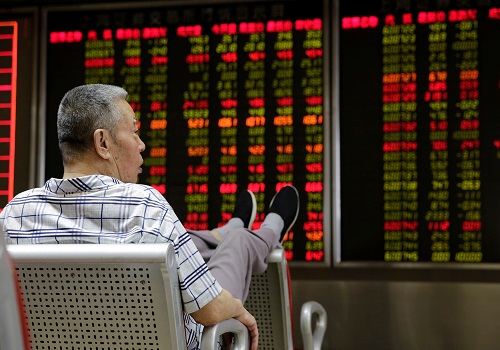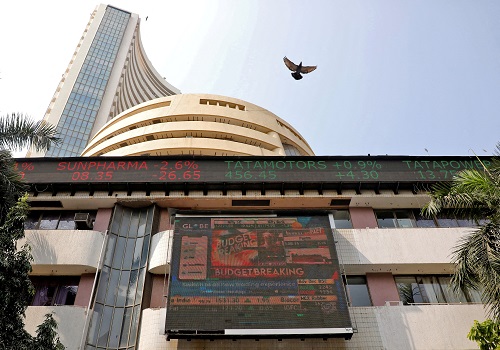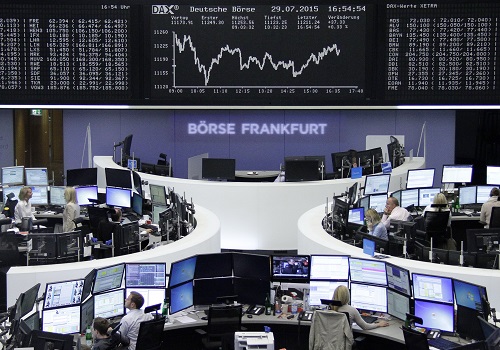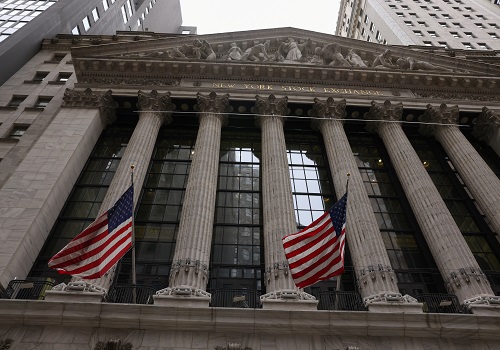World stocks on back foot as China COVID cases rise

Follow us Now on Telegram ! Get daily 10 - 12 important updates on Business, Finance and Investment. Join our Telegram Channel
World stocks and oil prices fell on Monday as fresh COVID-19 curbs in China fuelled worries over the global economic outlook.
The safe-haven dollar rallied, while the U.S. Treasury yield curve remained deeply inverted in a sign that investors remain alert to global recession risks.
Coronavirus outbreaks across China are a setback to hopes for an easing of strict pandemic restrictions, one factor cited for a 10% slide in oil prices last week and Monday's lacklustre opening in European stocks.
Beijing's most populous district urged residents to stay at home on Monday as the city's COVID case numbers rose, while at least one district in Guangzhou was locked down for five days.
This knocked major European bourses , with markets in Frankfurt and Paris softer, while S&P 500 futures and Nasdaq futures slipped 0.5% and 0.8% respectively.
MSCI's broadest index of world shares fell 0.5%.
The U.S. Thanksgiving holiday on Thursday and the distraction of the World Cup could make for thin trading, while Black Friday sales will offer an insight into how consumers are faring.
A risk-off feeling kicks off the week, Fiona Cincotta, a senior markets analyst at City Index in London, said.
"There is demand for safe havens like the dollar and riskier assets are on the back foot," she added. "The other thing to bear in mind is that we have a had a strong rally, so there is a feeling of need to take stock of where we are."
The dollar was up 1.1% against Japan's yen at 141.94, having hit its highest since Nov. 11. The pound and the euro fell by 0.7% and 0.8% respectively, edging off from last week's 18-week highs.
China's yuan eased to a 10-day low against the dollar on Monday on the worsening COVID-19 infection numbers.
PRICED FOR RECESSION
Atlanta Federal Reserve President Raphael Bostic on Saturday said he was ready to step down to a half-point interest rate hike in December but also underlined that rates would likely stay high for longer than markets expect.
Inflation has trended lower since June when it was around 9.1%, raising expectations that a peak in Fed rates is near.
"But, if the Fed signals a relaxation too soon, they could loosen monetary conditions too much. And that's why they're talking about the possibility that rates could be higher for longer," said Michael Hewson, chief market analyst at CMC Markets UK.
"It's just jaw boning to make sure that markets don't price a pivot too soon," he said.
Bond markets suspect the Fed will tighten policy too far and tip the economy into recession. The Treasury yield curve, measured by the gap between two and 10-year bond yields, is at around -70 basis points (bps) and nearing the level last seen in 2000
Two-year Treasury yields were last up 2 bps on the day at 4.53%, while 10-year yields were just 1 bps higher at 3.83%
There are at least four Fed officials scheduled to speak this week, ahead of a speech by Chair Jerome Powell on Nov. 30 that will define the outlook for rates at the December policy meeting.
"I think we'll continue to see yields drift lower this week," said ING senior rates strategist Antoine Bouvet.
"European PMIs (Purchasing Managers Index)are likely to indicate a slowing economy, this week's FOMC minutes are likely to come across more dovish than the very hawkish tone in Powell's press conference after the meeting, and the China COVID news, on balance, increases risk aversion, and so pushes yields lower."
Central banks in Sweden and New Zealand are expected to hike rates this week, perhaps by 75 bps.
The Fed chorus has helped the dollar stabilise after its recent sharp sell-off, though speculative positioning in futures has turned net short on the currency for the first time since mid-2021.
Meanwhile, turmoil in cryptocurrencies continued with the FTX exchange, which has filed for U.S. bankruptcy court protection, saying it owes its 50 biggest creditors nearly $3.1 billion.
In commodity markets, gold slipped 0.5% to $1,740 an ounce, after dipping 1.2% last week. [GOL/]
Oil futures failed to find a floor after last week's drubbing that saw Brent crude tumble almost 9%.
Brent was last down 0.5% to $87.16, while U.S. crude futures slipped 0.6% to $79.59 per barrel. [O/R]












 320-x-100_uti_gold.jpg" alt="Advertisement">
320-x-100_uti_gold.jpg" alt="Advertisement">












